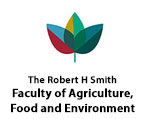Wind erosion susceptibility of soils from the Southern Aral Sea Basin
Using a wind tunnel,the wind erosion susceptibility of soils from the Southern Aral Sea is determined. The effects of moisture and chemical stabilizer treatments on the soils is examined. Emphasis is on the susceptibility of Takyr soil crusts (fine-grained material) and Solonchak crusts (salt crusts).
Wind erosion susceptibility of soils
Using PM10 and PM2.5 dust generation potentials of soils, their wind erosion susceptibility is assessed. In collaboration with USDA Wind Erosion Laboratory in Lubbock, Texas, the PM10 and PM2.5 dust generation of soils is determined,using the Lubbock LDGASS.
Dust generations and distribution in the Amu Darya river delta, Aral Sea region, Uzbekistan
As a result of the recent desiccation process of the Aral Sea, huge dust storms that distribute immense quantities of saline dust over large areas of the Amu Darya delta have become common. The objective of this research is to quantify, by meteorological numerical models, dust movement and salt distribution. More specifically, the aim is to assess the effects of large water bodies on dust generation. An additional aim is to assess the deflatability of the soils and sediments of the area, and to examine the effects of synthetic chemicals applied to these soils on their deflatability.
Hydrothermal minerals in Red Sea sediments
The central (and deepest) portion of the Red Sea is formed by depressions ("Deeps") that contain pools of brines accumulated from vents at the bottom of the depression. The aim of this project is to study the mineral composition of the deposits that had formed as precipitates from these brines. The hydrothermal minerals formed include silicates and Fe oxides with very special characteristics. The objective of the study is to relate the mineralogy and chemistry of these minerals to the specific environment of formation.
Effects of palygorskite on properties of Jordan Valley soils
Palygorskite is a clay mineral common only in semi-arid soils; the aim of this project is to examine the effect this clay has on the chemistry of the soil solution and on the erodibility of these soils. The hydrolysis of this clay under alkaline conditions is compared to that of soils under similar conditions and the effect on soil solution examined. The rheology of palygorskite is studied and interpreted in terms of mobility of the dispersed clay. Results of the study will serve to improve the management of these soils in the Jordan and Bet-Shean Valley.
Terra Rossa soils in Israel and Yucatan, Mexico
A comparative study of the clay mineralogy in Terra Rossa soils from Israel, formed under a Mediterranean climate with winter rains, with that of Terra Rossa soils from Yucatan, Mexico, formed under summer rains of a comparable magnitude.



